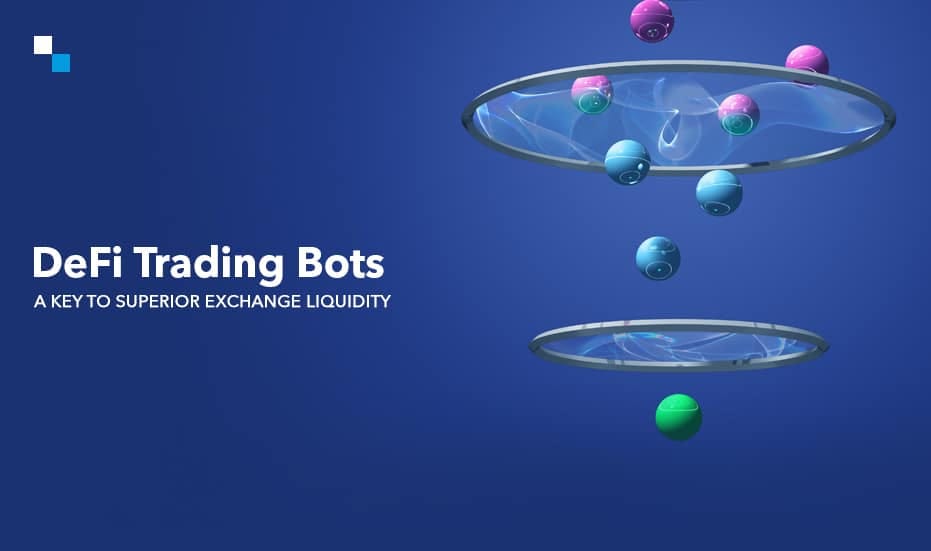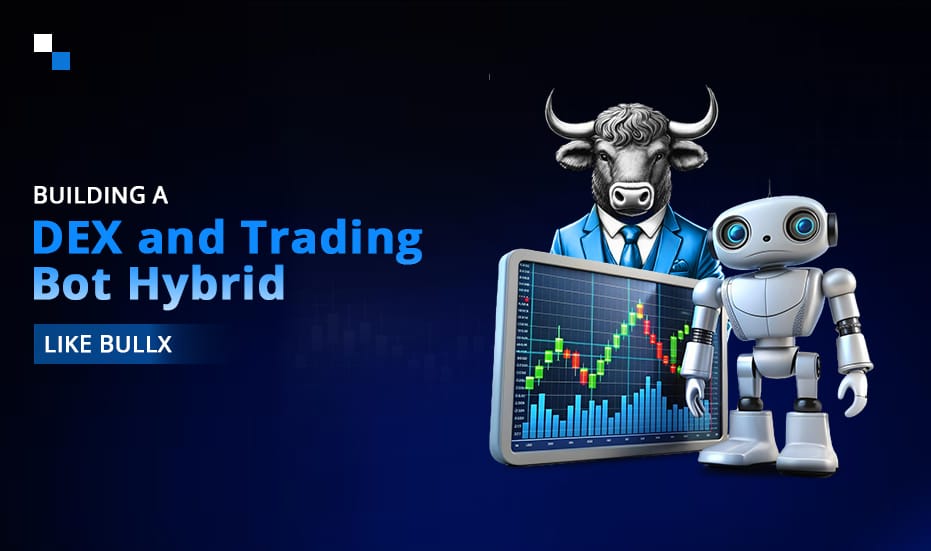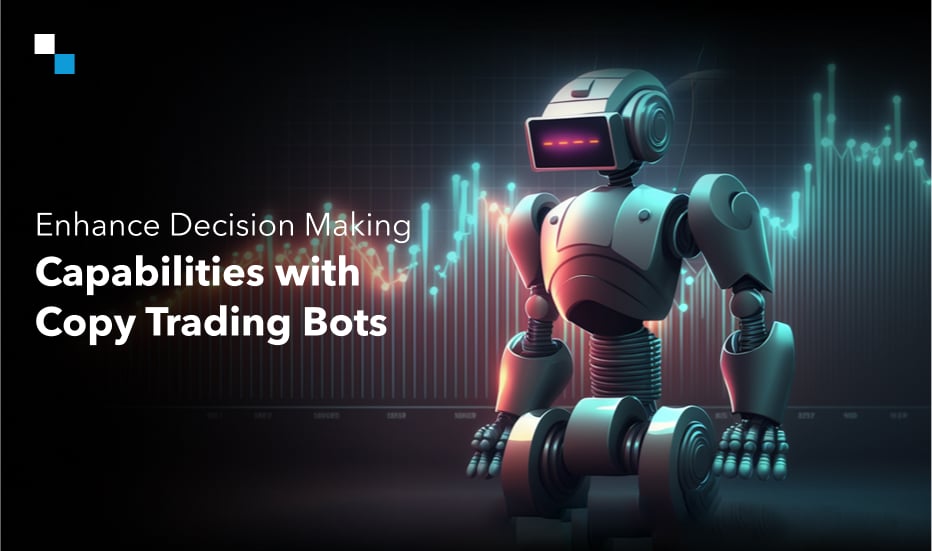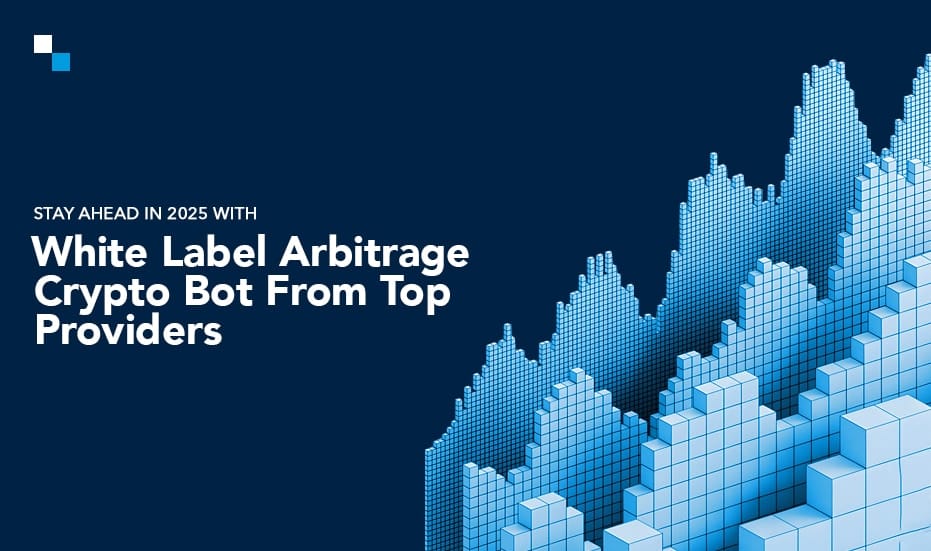
Build the Next Hit P2E Game with Farmers World Clone Script
June 3, 2024
How the Metaverse Learning Platform Development is Transforming Virtual Campus Tours?
June 3, 2024Decentralized Finance has revolutionized the traditional financial landscape, offering innovative solutions that prioritize transparency, accessibility, and user control. Liquidity is one of the key components that drives the success of any DeFi platform. No wonder, liquidity is the lifeblood of any crypto exchange. It determines the ease with which users can buy and sell assets, impacting price stability, trading efficiency, and ultimately, the success of the platform. While traditional exchanges rely heavily on market makers and institutional investors, DeFi exchanges are exploring innovative ways to attract liquidity. In such a scenario, DeFi trading bot development is emerging as a powerful endeavor.
This article will delve into the intricate relationship between DeFi trading bots and exchange liquidity, exploring how these automated systems can significantly enhance the efficiency and depth of trading markets.
Understanding Liquidity in DeFi Exchanges
Traditional centralized exchanges often rely on market makers and order book systems to facilitate trades and maintain liquidity. However, in the decentralized realm, liquidity is provided through automated market makers (AMMs) and liquidity pools. AMMs use mathematical formulas to determine the prices of assets based on their relative supply and demand within the liquidity pool. Liquidity providers contribute their assets to these pools and earn trading fees as a reward for their participation.
Understanding DeFi Trading Bots
DeFi trading bots are automated programs designed to execute trades on decentralized exchanges (DEXs) based on predefined strategies. DeFi trading bot development allows investors to continuously monitor market conditions, analyze data, and execute trades at lightning-fast speeds, leveraging arbitrage opportunities and generating liquidity across multiple DEXs and liquidity pools.
Here are some key features of DeFi trading bots:
- Automated Execution: Bots operate 24/7, eliminating the need for manual intervention and ensuring the timely execution of trades.
- Algorithmic Trading: They can employ complex algorithms to analyze market data, identify patterns, and execute trades based on predefined logic.
- Customizable Strategies: Users can tailor bots to their specific needs and risk tolerance, defining parameters like price targets, stop-loss orders, and trading frequency.
- Decentralized Nature: DeFi trading bots operate on blockchain networks, eliminating reliance on centralized entities and ensuring transparency and security.
How DeFi Trading Bots Boost Liquidity
The key to understanding how DeFi trading bots enhance liquidity lies in their ability to create a constant flow of buy and sell orders on the exchange. This constant activity ensures that there are always willing buyers and sellers, even for less popular assets, leading to:
- Increased Order Book Depth
Bots can constantly place limit orders at various price points, adding depth to the order book. This depth ensures that large orders can be filled without significantly impacting the asset price, fostering price stability.
- Reduced Slippage
With a deeper order book, bots help reduce slippage, the difference between the expected and actual execution price. This ensures that users receive a more accurate price for their trades, improving their overall trading experience.
- Enhanced Market Efficiency
Bots can identify and exploit arbitrage opportunities, taking advantage of price discrepancies between different exchanges. This activity helps to align prices across different platforms, increasing market efficiency.
- Increased Market Activity
The constant activity of bots creates a more dynamic and active trading environment, attracting more users and further increasing liquidity.
- Improved Price Discovery
With more traders and orders, the price discovery process becomes more efficient, allowing for a more accurate reflection of the underlying asset’s value.
Benefits of DeFi Trading Bot Development for Exchanges
The integration of DeFi trading bots into an exchange platform brings numerous advantages:
- Increased Trading Volume: Bots can significantly increase the exchange’s trading volume by facilitating a higher number of trades, leading to higher fees and revenue.
- Improved User Experience: With reduced slippage and a deeper order book, users enjoy a smoother and more efficient trading experience, leading to increased satisfaction and loyalty.
- Enhanced Market Reputation: A highly liquid exchange attracts more users and investors, boosting its reputation and overall market standing.
- Competitive Advantage: By embracing innovative tools like trading bots, exchanges can differentiate themselves in a competitive market and attract a larger user base.

Benefits for Users
DeFi trading bot development also provides significant advantages for individual traders:
- Automated Trading: Users can leverage bots to automate their trading strategies, saving time and effort while freeing them to focus on other activities.
- Increased Efficiency: Bots can identify and execute trades faster and more accurately than humans, maximizing trading profits and minimizing losses.
- Access to Advanced Strategies: Bots allow users to implement complex trading strategies, even if they lack the technical expertise to do so manually.
- Reduced Risk: Through stop-loss orders and other risk management tools, bots can help users mitigate potential losses and protect their investments.
Challenges and Solutions of DeFi Trading Bot Development
Developing a DeFi trading bot presents a unique set of challenges due to the decentralized and dynamic nature of the DeFi ecosystem. Here’s a breakdown of key challenges and potential solutions:
Challenge 1: Volatility and Market Fluctuations: DeFi markets are highly volatile, with prices fluctuating rapidly and unpredictably.
Solution
- Robust Risk Management: Implement stop-loss orders, trailing stops, and other risk mitigation strategies.
- Adaptive Strategies: Design algorithms that adjust trading parameters based on market conditions, using indicators like volatility, momentum, and price trends.
- Market Monitoring: During DeFi trading bot development, the developers must ensure that the bot is capable of continuously monitoring market data and adjusting strategies accordingly.
Challenge 2: Smart Contract Security: DeFi protocols rely on smart contracts, which are susceptible to vulnerabilities and exploits.
Solution
- Thorough Code Audits: Ensure rigorous audits by independent security experts before deploying your bot.
- Security Best Practices: Adhere to security best practices for smart contract development, including using secure coding practices and limiting access to sensitive information.
- Bug Bounty Programs: Offer incentives for finding and reporting vulnerabilities.
Challenge 3: Network Congestion and Gas Fees: Ethereum network congestion can lead to high gas fees and delays in transaction execution, impacting trading efficiency.
Solution
- Optimize Transaction Parameters: Adjust gas price and gas limit to minimize fees while ensuring timely execution.
- Off-Chain Execution: Explore solutions like Layer-2 scaling solutions or off-chain execution to reduce on-chain fees.
- Time-Based Execution: Schedule trades during periods of lower network congestion.
Challenge 4: Liquidity and Slippage: Liquidity can be limited in DeFi markets, leading to price slippage and potential losses.
Solution
- Choose Liquid Pools: Prioritize trading on highly liquid pools with sufficient depth.
- Limit Order Strategies: Use limit orders to ensure trades are executed at the desired price.
- Slippage Tolerance: Implement strategies to handle potential slippage and adjust trading parameters accordingly.
Challenge 5: Data Availability and Accuracy: Accessing reliable and real-time market data in a decentralized environment can be challenging.
Solution
- Decentralized Data Feeds: Utilize reliable decentralized data feeds like Chainlink or other oracles.
- Data Aggregation: Combine data from multiple sources to enhance accuracy and reliability.
- Real-Time Monitoring: Implement systems to track market data and adjust strategies based on real-time updates.
Challenge 6:Regulatory Uncertainty: The regulatory landscape for DeFi is still evolving, creating uncertainty and potential legal risks.
Solution
- Stay Informed: Monitor regulatory developments and adapt strategies accordingly.
- Compliance Focus: A trading bot development expert should ensure that your bot adheres to the relevant regulations and KYC/AML requirements.
- Consult Legal Experts: Seek legal advice to navigate the evolving regulatory environment.
Challenge 7: Complexity and Development Time: Developing a robust and reliable DeFi trading bot requires extensive technical expertise and significant development time.
Solution
- Utilize Existing Frameworks and Libraries: Leverage existing frameworks and libraries to streamline development.
- Collaborate with Experts: Partner with an experienced DeFi trading bot development firm with specialized DeFi development teams.
- Focus on Specific Strategies: Start with a specific trading strategy and gradually expand functionality over time.
Challenge 8: User Interface and Accessibility: Making DeFi trading bots accessible and user-friendly for a wider audience can be challenging.
Solution
- Intuitive Interfaces: Develop user-friendly interfaces that simplify bot configuration and management.
- Automated Trading Features: Offer features like automatic portfolio rebalancing and trading based on predefined rules.
- Educational Resources: Provide comprehensive documentation and educational resources to empower users.
By addressing these challenges effectively, developers can build robust and reliable DeFi trading bots offering significant opportunities for traders and investors.
The Last Words
DeFi trading bots are a powerful force in the evolution of decentralized finance, driving liquidity and enhancing the trading experience for both exchanges and users. They contribute to a deeper order book, reduce slippage, and improve price discovery by creating a constant flow of buy and sell orders. While there are some challenges in developing a DeFi trading bot, the benefits of integrating these automated systems are undeniable, paving the way for a more efficient, dynamic, and accessible DeFi ecosystem.
Antier, a specialist in DeFi trading bot development, has a deep understanding of creating cutting-edge DeFi trading bots that leverage advanced algorithms and data analysis to execute arbitrage trades and provide liquidity across multiple DEXs. These bots drive efficiency, enhance price discovery, and increase trading opportunities, ultimately boosting the overall liquidity of decentralized exchanges. Get ready to enter the era of automated crypto trading with us. Consult us today!



